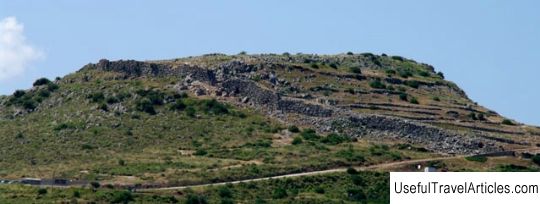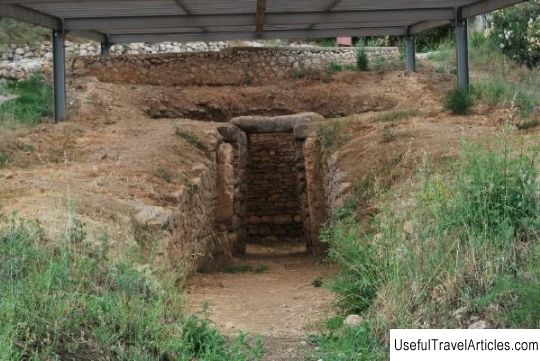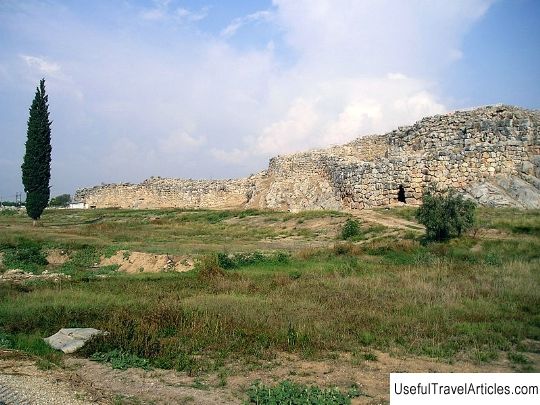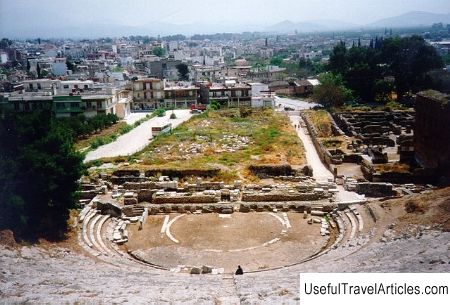Remains of the Mycenaean Acropolis in Midea (Acropolis of Midea) description and photos - Greece: Argos
Rating: 8,4/10 (2143 votes) 
Remains of the Mycenaean Acropolis in Midea (Acropolis of Midea) description and photos - Greece: Argos. Detailed information about the attraction. Description, photographs and a map showing the nearest significant objects. The title in English is Acropolis of Midea. Photo and descriptionAt 12 km from Argos is the village of Midea, over which a hill rises with the ruins of the once magnificent Mycenaean acropolis. Researchers consider it the third most important and well-fortified acropolis of Argolis after Mycenae and Tiryns, as well as an important administrative and economic center. The citadel, built on a hilltop at an altitude of 270 m above sea level and located between Mycenae and Tiryns, was considered a strategically important site. The panoramic view from the top of the hill provided control over the entire valley and the bay. In the construction of this acropolis, as in Mycenae and Tiryns, the so-called cyclopean masonry was used, which is a structure of huge boulders. Interestingly, no binder solution was used in such structures. The ancient Greeks attributed structures with such masonry to Cyclops, which is where the name “Cyclopean” may have come. The first significant excavations were carried out in 1939 by the Swedish archaeologist Axel Persson. The circular Cyclopean wall covers an area of 24,000 square meters. and protects the upper acropolis and the lower terraces of the northwestern and northeastern slopes. On the southern side, the acropolis is protected by a steep rock, so additional fortification was not required here. The Acropolis has two gates opposite each other in the western and eastern parts of the fortification. The eastern gate was the main entrance and led to the Upper Acropolis, located on a rocky area. Today the eastern gate has been cleared of rubble and appears before us as a wide gap in the wall. The western gate led to the Lower Acropolis with its terraces. Near the entrance was a room that was probably used as a guardhouse and storage room. Also on the territory of the Lower Acropolis, a large rectangular structure (megaron) was discovered. The Acropolis was equipped with a drainage system with a built-in pipeline and underground reservoirs. At the end of the 13th century BC. as a result of the earthquake, the fortress wall and all the structures of the acropolis were severely damaged. During excavations in different parts of the acropolis, remains of skeletons (victims of the earthquake) were found, crushed by huge stones. The citadel was rebuilt after the destruction and was used in the 12th century BC During the excavation of the acropolis of Midea, many valuable and interesting artifacts were found: ceramics, bronze items, fragments of frescoes, seals, weapons, jewelry, various stone and metal products, utensils, etc.      We also recommend reading Torre Caligo tower description and photos - Italy: Lido di Jesolo Topic: Remains of the Mycenaean Acropolis in Midea (Acropolis of Midea) description and photos - Greece: Argos. |




